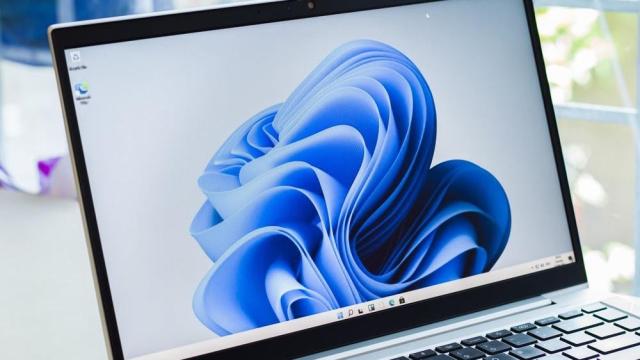There are several ways to take a screenshot on Windows 11. Most of the screenshot shortcuts are the same as on Windows 10, but there are a few extra screen capture features available that are unique to Windows 11.
Print Screen shortcuts
Let’s start with the most obvious method: the Print Screen key (truncated to “PrntScrn” on some keyboards), which is your keyboard’s dedicated screenshot button.
Full-size keyboards usually have a dedicated Print Screen key, but smaller keyboards and laptops often put the Print Screen key as a secondary function elsewhere (normally on the F12 key), in which case you need to press the “FN” key and the Print Screen key at the same time.
There are several ways to use this key for screenshots, but these are the most common:
- Press Windows key + Print Screen key to save an image of whatever is currently on-screen in the Pictures > Screenshots folder.
- The other bog standard screenshot technique for Windows is to just press Print Screen (or FN + Print Screen) to copy an image of the current desktop to your clipboard. With the screenshot copied, open any image editing app or word-processing app that supports images, and paste it (either Right-click > Paste, or press Ctrl + V), then save the document.
- Press Alt + Print Screen to copy a screenshot of just the window or app that you’re actively using to the clipboard. Make sure you click on the app or folder window you want to capture before pressing the shortcut. Remember to paste and save the screenshot in another program.
- If your keyboard doesn’t have a Print Screen key at all, the Windows key + FN + Space shortcut will also copy a screenshot to your clipboard.
Screen Snipping and Snip & Sketch tools
Along with the default Print Screen shortcuts, Windows 11 also has two built-in apps that let you click and drag to select specific areas to screenshot: Screen Snipping and Snip & Sketch.
Technically, both apps integrate with one another; you use Snip & Sketch to make the screenshot, then Snipping Tool to crop, edit, or draw over the selection, and save it directly as an image. The Snipping Tool menu also includes a capture delay, so you can time your screenshot to happen three, five, or 10 seconds later.
The easiest way to get started is to search for “Snipping tool” in the Start menu and open it from the search results.
Alternatively, you can change the Print Key function to open the Snipping Tool instead of taking a screengrab. This is done in the Windows 11 settings menu:
- Go to Settings > Accessibility > Keyboard.
- Enable “Use the Print Screen button to open screen snipping.”
- Close the Settings menu, then press “Print Screen” to open the Snipping Tool.
Here’s how to take a screenshot with the tool once it’s opened:
- Click “New” from the Snipping Tool pop-up menu or press “Windows key + Shift + S” to start a new capture with Snip & Sketch. You can also set up a capture delay, if you want.
- A tiny menu appears at the top of the screen, and your desktop will dim slightly.
- The menu includes four icons that will change your snippet shape: The first icon on the left is a rectangular selection, the second is a “free form” selection, third captures the currently-selected app or folder window (like Alt + Print Screen), and the right-most icon is a full screen capture (like pressing the Print Screen key or Windows key + Print Screen).
- Click the selection type you want, then click and drag to select the part of the screen you want to save as a screengrab.
- The image will open in the Snipping Tool menu. There will be several editing options, including pen tools, image cropping, and other adjustments you can use, if desired.
- Click the “Save” icon to save the image to the Pictures > Screenshots folder.
You can also use Snip & Sketch without using the Snipping Tool (I know, it’s confusing):
- Press Windows key + Shift + S at any time you’re not using the Snipping Tool to open Sketch & Snip instead. This skips the Snipping Tool menu for setting delay timers and takes you directly to the screengrab menu.
- After taking the screenshot, it will be copied to your clipboard so you can paste and save it elsewhere.
- You can also click the pop-up notification to open your screenshot in Snipping Tool so you can edit and save it as an image.
Between the numerous keyboard shortcuts and the built-in Snipping Tool and Sketch & Snip apps, there are numerous methods for taking a screenshot on Windows 11… for now, anyway. Windows 11 is still in beta, so there’s always a chance some of these methods could change, merge, or disappear in later versions of the OS, or new screenshot options could be added. We’ll be sure to update this guide if that happens.

Leave a Reply
You must be logged in to post a comment.